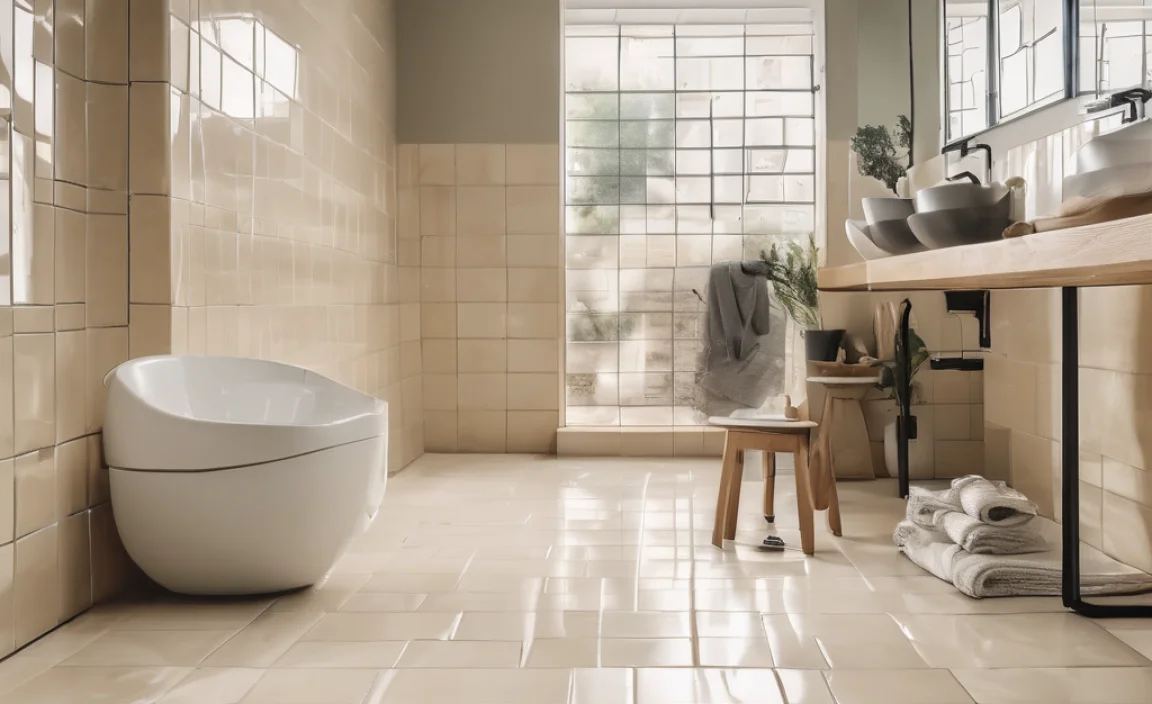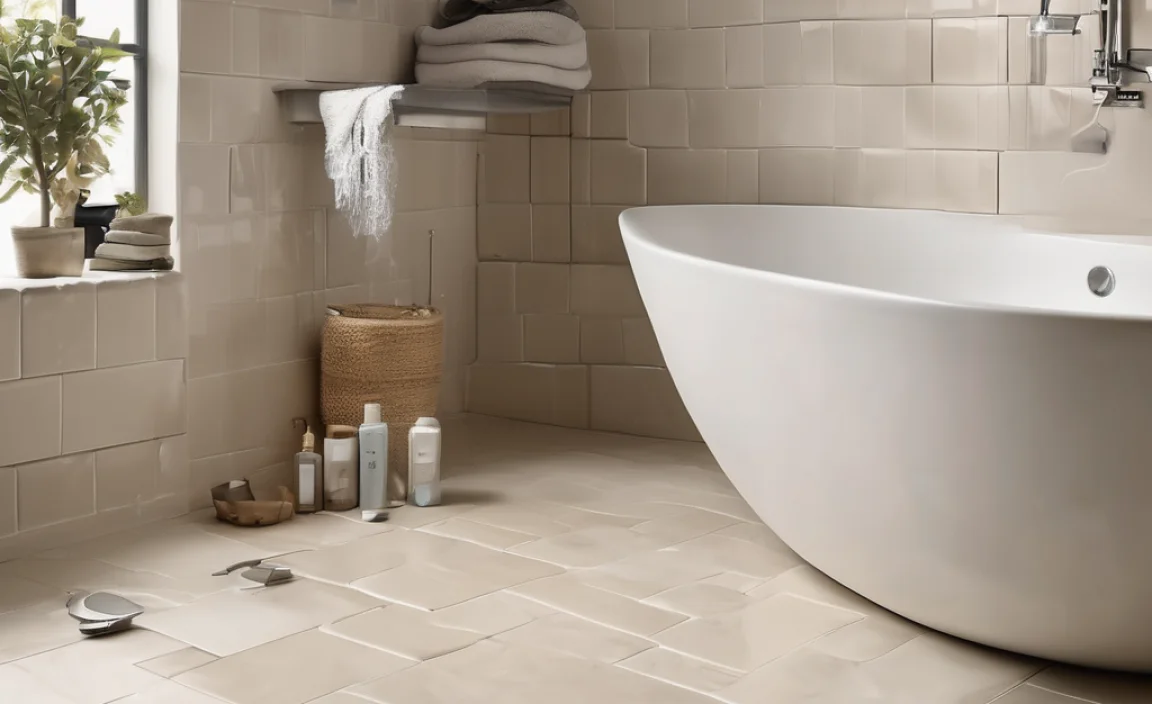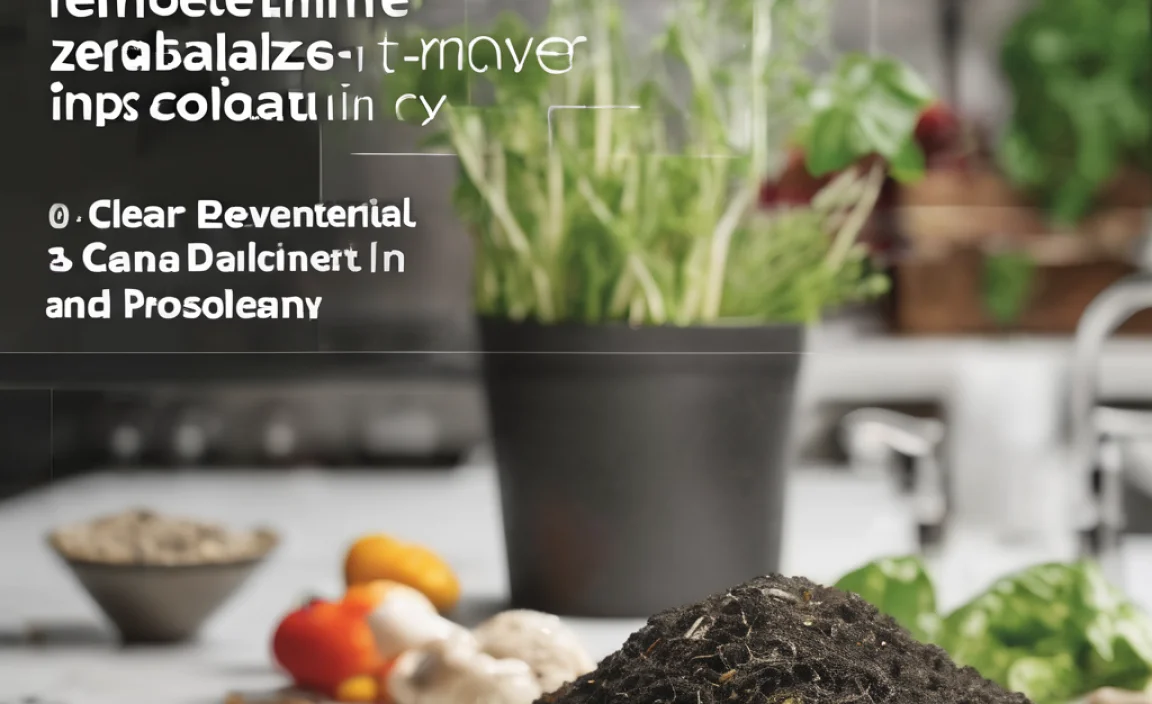Choosing the right grout color for cream floor tiles is crucial for the overall look of your space. Warmer grout colors like beige, light brown, or tan will create a seamless, cohesive look. Cooler colors such as white or light gray can offer a contrasting, modern style. Consider the undertones of your cream tiles and the amount of foot traffic to make the best choice.
Picking the right grout color can feel like the final boss in your flooring project. You’ve got those beautiful cream tiles laid out, but now you’re staring at what seems like a million grout options. Don’t worry! It’s a common puzzle, and the right choice can make your floor look fantastic. The wrong one? Well, let’s just say we want to avoid that.
This guide will walk you through easy steps to choose the perfect grout color. We’ll look at matching, contrasting, and even hiding dirt. Ready to make your cream floor tiles pop? Let’s get started!
Understanding Cream Tile Undertones

Before diving into grout colors, let’s talk about your cream tiles. Cream isn’t just cream; it has undertones that can lean warm or cool. Identifying these undertones is key to choosing a grout color that harmonizes perfectly.
Warm Undertones
Tiles with warm undertones tend to have hints of yellow, beige, or even a touch of pink. These tiles create a cozy, inviting feel. To determine if your cream tiles have warm undertones, hold a white piece of paper next to them. If the tile looks slightly yellow or beige in comparison, it has warm undertones.
Cool Undertones
Cream tiles with cool undertones often have hints of gray, white, or even a slight blue tint. These tiles give off a cleaner, more modern vibe. Use the same white paper test. If the tile looks slightly gray or bluish next to the paper, it has cool undertones.
Grout Color Options for Cream Floor Tiles

Now that you’ve figured out your tile’s undertones, let’s explore grout color options. We’ll cover matching, contrasting, and practical choices for hiding dirt.
Matching Grout Colors
Matching the grout color to your cream tiles creates a seamless, uniform look. This is a great option if you want your floor to appear larger and more cohesive.
- Beige: A classic choice for warm cream tiles. Beige grout blends beautifully, creating a subtle, elegant appearance.
- Light Brown: Another excellent option for warm-toned tiles. Light brown grout adds a touch of depth without creating a stark contrast.
- Warm Gray: For cooler cream tiles, a warm gray grout can provide a subtle, blended look.
Contrasting Grout Colors
If you’re aiming for a more modern or visually interesting floor, contrasting grout colors might be the way to go. Keep in mind that contrast can highlight the tile pattern.
- White: A crisp, clean contrast, especially for warmer cream tiles. White grout makes the tiles pop and brightens the space.
- Light Gray: A versatile option that works well with both warm and cool cream tiles. Light gray provides a subtle contrast that’s easy on the eyes.
- Dark Gray: For a bolder statement, dark gray grout can create a striking contrast. This works best with lighter cream tiles in modern settings.
Practical Grout Colors for Hiding Dirt
Let’s face it, floors get dirty. If you want a grout color that’s forgiving and hides dirt well, consider these options:
- Medium Gray: A fantastic choice for high-traffic areas. Medium gray grout hides dirt and stains effectively while still looking stylish.
- Tan: Similar to beige, tan grout is excellent for warmer cream tiles and does a good job of concealing everyday grime.
- Brown: A darker option that’s great for busy households. Brown grout is very forgiving and can handle a lot of wear and tear.
Factors to Consider When Choosing Grout Color

Choosing the right grout color involves more than just aesthetics. Here are some key factors to keep in mind:
Foot Traffic
High-traffic areas like kitchens and entryways are prone to dirt and stains. Opt for medium to dark grout colors that can hide grime effectively. Lighter colors might require more frequent cleaning.
Room Size and Lighting
In smaller rooms, using matching grout colors can make the space feel larger and more open. In well-lit rooms, you can experiment with contrasting colors without making the space feel cramped. Poorly lit rooms might benefit from lighter grout colors to brighten the area.
Style and Décor
Consider your overall design style. A modern, minimalist space might call for contrasting grout colors, while a traditional, cozy room might benefit from matching grout. Ensure the grout color complements your furniture, wall colors, and accessories.
Type of Grout
Different types of grout come in various colors. Epoxy grout is stain-resistant and comes in a wide range of colors, making it a great choice for kitchens and bathrooms. Cement-based grout is more porous and might require sealing to prevent staining.
Step-by-Step Guide to Choosing the Perfect Grout Color
Ready to make your decision? Follow these steps to nail the perfect grout color for your cream floor tiles:
Step 1: Gather Samples
Collect samples of your cream tiles and potential grout colors. Most tile and home improvement stores offer grout color charts and small grout samples. Bring these home to see how they look in your space under different lighting conditions.
Step 2: Test the Samples
Place the grout samples next to your tiles. Evaluate how the colors look together in both natural and artificial light. Take your time and observe the samples throughout the day to see how the colors shift.
Step 3: Consider the Undertones
Determine whether your cream tiles have warm or cool undertones. Match warm grout colors with warm tiles and cool grout colors with cool tiles for a harmonious look. If you’re going for contrast, choose a grout color that complements the undertones.
Step 4: Think About Maintenance
Consider how much time and effort you’re willing to spend on cleaning. Lighter grout colors require more maintenance to keep them looking fresh. Darker grout colors are more forgiving and hide dirt better.
Step 5: Visualize the Final Result
Use online tools or software to visualize how different grout colors will look with your cream tiles. Some tile retailers offer virtual design tools that allow you to upload a photo of your space and experiment with various grout colors.
Tools You’ll Need
Here’s a quick list of tools you might need for your grouting project:
- Grout saw or removal tool
- Vacuum cleaner
- Bucket
- Grout sponge
- Rubber gloves
- Grout float
- Caulk gun (if applying sealant)
Grout Color Chart Examples
Here are some examples of grout color charts to help you visualize your options:
| Grout Color | Description | Suitable for |
|---|---|---|
| Bright White | A crisp, clean white. | Modern spaces, high contrast. |
| Antique White | A slightly warmer, softer white. | Traditional spaces, subtle contrast. |
| Light Beige | A light, neutral beige. | Warm cream tiles, seamless look. |
| Medium Gray | A versatile, mid-tone gray. | High-traffic areas, hides dirt. |
| Dark Brown | A rich, dark brown. | Busy households, hides stains. |
Maintenance Tips for Different Grout Colors
Keeping your grout clean will help maintain the overall look of your floor. Here are some tips for different grout colors:
Light Grout Colors
- Clean Regularly: Wipe up spills immediately and clean the grout lines weekly with a grout brush and mild cleaner.
- Use Sealant: Apply a grout sealant to protect against stains. Reapply every 6-12 months.
- Baking Soda Paste: For tough stains, make a paste of baking soda and water. Apply to the grout lines, let sit for a few minutes, and scrub with a brush.
Dark Grout Colors
- Regular Sweeping: Sweep or vacuum regularly to remove dirt and debris.
- Mild Cleaner: Use a mild, pH-neutral cleaner to avoid fading or discoloration.
- Avoid Abrasives: Don’t use abrasive cleaners or scrub brushes, as they can damage the grout.
Common Mistakes to Avoid
Choosing grout color can be tricky, so here are some common mistakes to steer clear of:
- Ignoring Undertones: Not considering the undertones of your cream tiles can lead to a mismatched look.
- Choosing Based on Trend Alone: Trends come and go. Pick a color that complements your style and will stand the test of time.
- Forgetting Maintenance: Choosing a grout color that’s difficult to maintain can lead to frustration.
- Not Testing Samples: Always test grout samples with your tiles before making a final decision.
Alternatives to Traditional Grout
If you’re looking for something different, consider these alternatives to traditional grout:
Epoxy Grout
Epoxy grout is highly durable, stain-resistant, and waterproof. It’s a great option for high-moisture areas like bathrooms and kitchens. Epoxy grout also comes in a wide range of colors and doesn’t require sealing.
Pre-Mixed Grout
Pre-mixed grout is convenient and easy to use. It’s pre-sealed and comes in a variety of colors. This is a good option for small projects or DIYers who want to avoid the hassle of mixing grout.
Colored Sand Grout
Colored sand grout adds texture and visual interest to your floor. It’s made with fine sand particles that create a slightly rough surface. This type of grout is ideal for rustic or natural-looking designs.
Cost Considerations
Here’s a breakdown of potential costs associated with choosing and installing grout:
| Item | Estimated Cost | Notes |
|---|---|---|
| Grout (Cement-Based) | $15-$30 per bag | Cost varies by brand and color. |
| Grout (Epoxy) | $40-$80 per container | More expensive but highly durable. |
| Grout Sealer | $10-$20 per bottle | Essential for cement-based grout. |
| Tools (Float, Sponge, Bucket) | $20-$50 | Basic tools for grout installation. |
| Professional Installation | $3-$8 per square foot | Cost varies by location and complexity. |
DIY vs. Professional Installation
Deciding whether to DIY or hire a professional depends on your skill level, time, and budget.
DIY Grout Installation
Pros:
- Cost-effective
- Flexibility to work at your own pace
- Sense of accomplishment
Cons:
- Requires time and effort
- Potential for mistakes
- May need to purchase specialized tools
Professional Grout Installation
Pros:
- Ensures proper installation
- Saves time and effort
- Professional results
Cons:
- More expensive
- Requires scheduling
- Less control over the process
Frequently Asked Questions (FAQ)
What is the best grout color for light cream tiles?
For light cream tiles, consider light beige or warm gray grout for a seamless look. If you want contrast, try white or light gray.
Can I use white grout with cream tiles?
Yes, white grout can create a clean, modern contrast with cream tiles. Just be prepared to clean it regularly to prevent staining.
How do I choose a grout color that hides dirt?
Opt for medium gray, tan, or brown grout in high-traffic areas to effectively hide dirt and stains.
Should I seal my grout after installation?
Yes, sealing cement-based grout is crucial to protect it from stains and moisture. Epoxy grout doesn’t require sealing.
What type of grout is best for bathrooms?
Epoxy grout is an excellent choice for bathrooms due to its water resistance and durability.
How often should I clean my grout?
Clean your grout at least once a week to prevent buildup of dirt and stains. More frequent cleaning may be needed in high-traffic areas.
Can I change my grout color after installation?
Yes, you can use grout stain or colorant to change the color of your existing grout. This is a cost-effective way to update the look of your floor.
Conclusion
Choosing the right grout color for your cream floor tiles doesn’t have to be a headache. By understanding your tile’s undertones, considering factors like foot traffic and room size, and following our step-by-step guide, you can confidently select a grout color that enhances your space. Whether you opt for a seamless match, a bold contrast, or a practical solution for hiding dirt, your cream floor tiles will look fantastic. So go ahead, grab those samples, and transform your floor into a stylish and inviting masterpiece!


